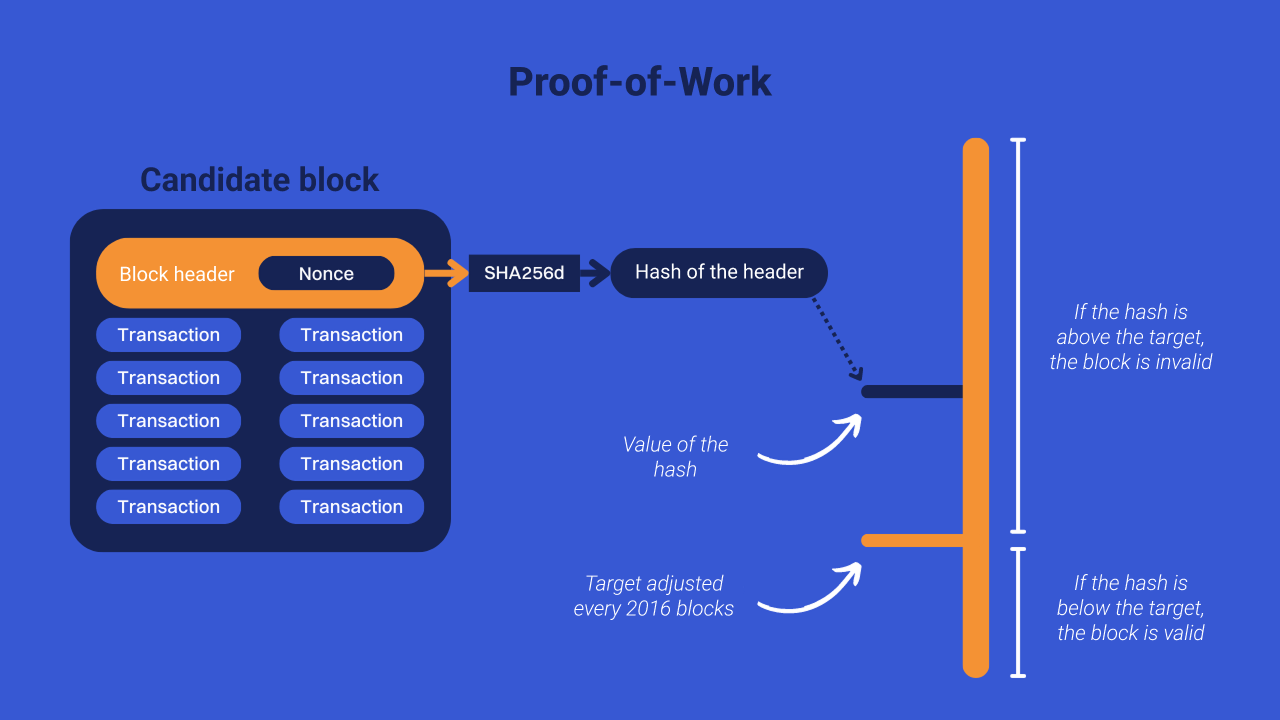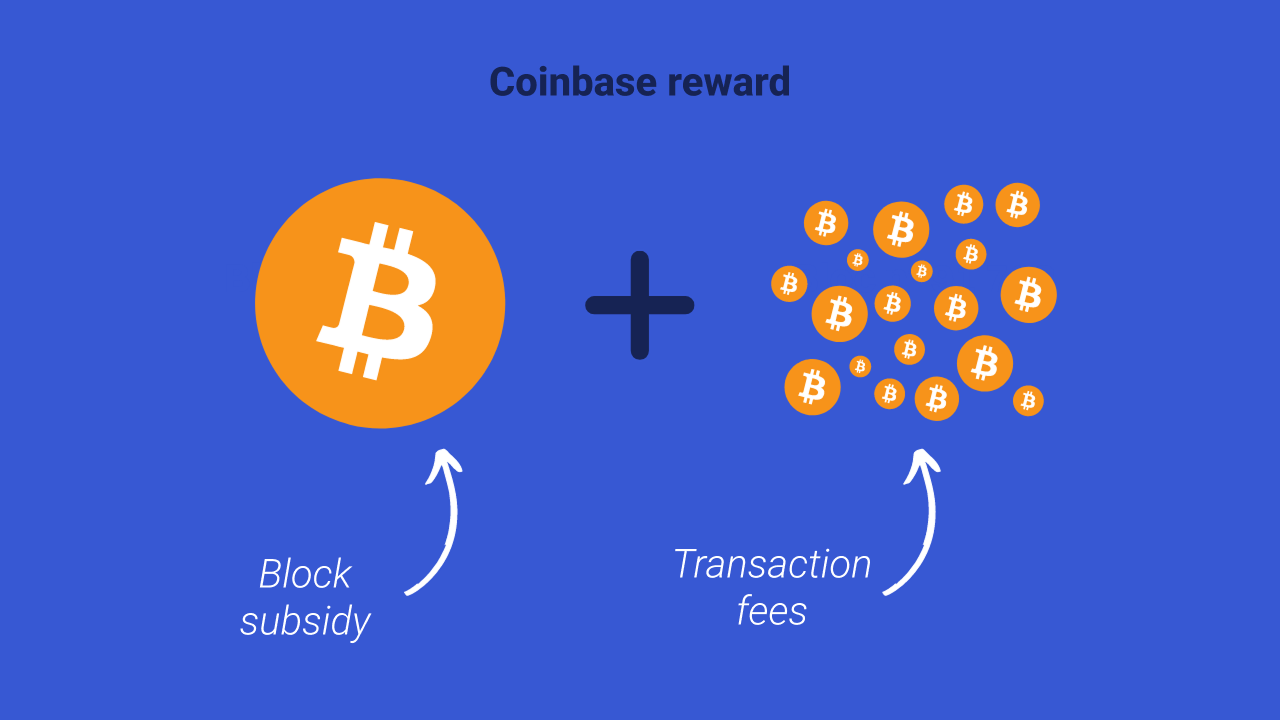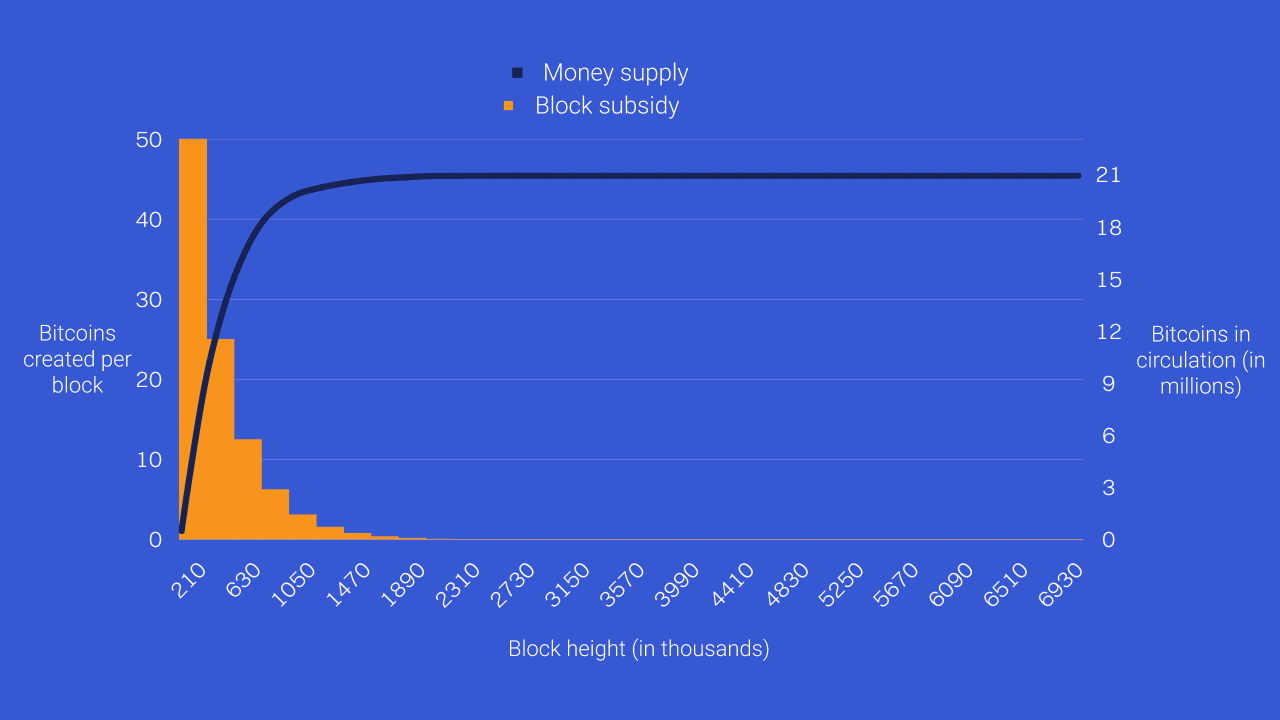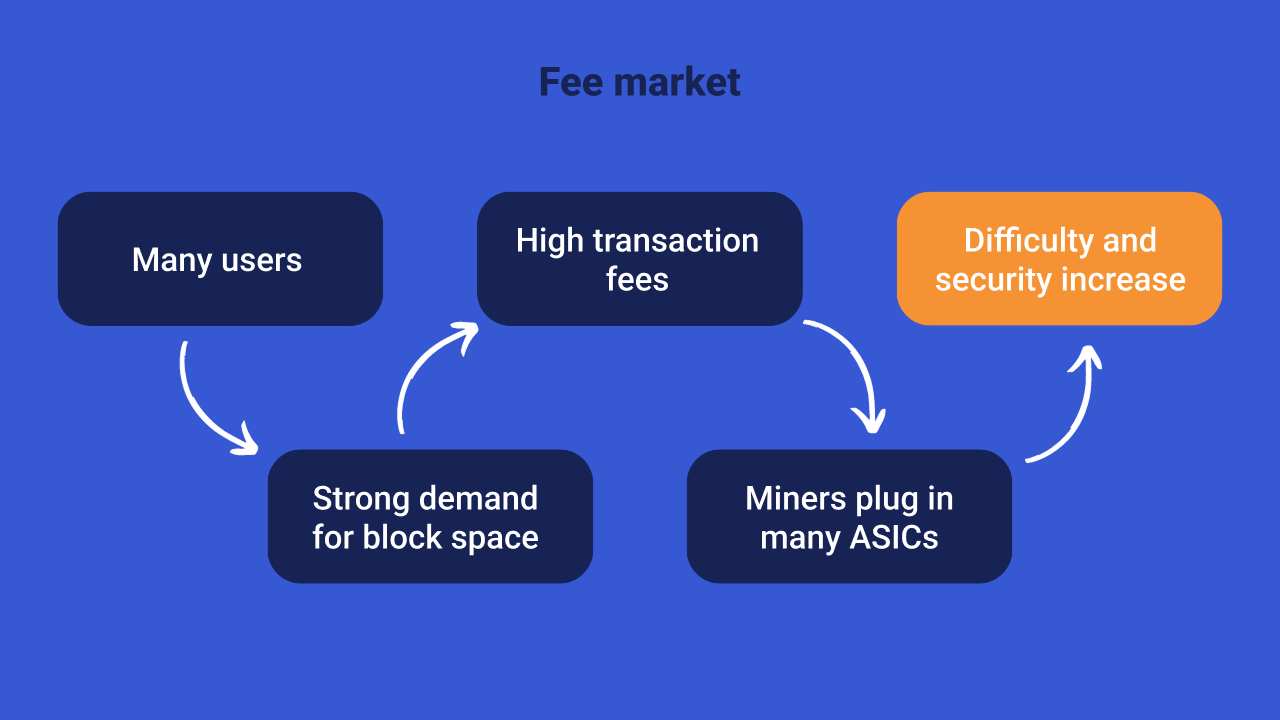Get started
Get started

At the time of writing this article, nearly 19,400,000 bitcoins have already been mined and are in circulation. All of these bitcoins were gradually distributed to miners who found valid blocks. This allows them to be paid in exchange for their work.
However, the total Bitcoin money supply is limited to 21 million units. Unless we break the consensus, we will never be able to issue a single more consensus. It is therefore entirely legitimate to question what will happen once the limit is reached. Will minors, who are then deprived of part of their remuneration, suddenly stop participating in the proof of work? This is what we are going to analyze in this article.
Minors take part in the Proof-of-Work process. Their role is to gather Bitcoin transactions awaiting confirmation into a candidate block. The minor must then find a value to add in his header, so that once passed through a random mathematical function, it gives a result that is less than a target number. It's a trial and error job.

This mechanism is called proof of work, and it protects the Bitcoin system against Sybil attacks. In fact, by asking minors to do this calculation work, they are imposing a significant marginal cost on them to multiply the votes. In other words, it protects the payment system from malicious acts.
Obviously, this work incurs costs for the minor. It must devote processor time to this activity and, above all, consume electricity. It is therefore imperative to pay these minors to encourage them to work honestly. The higher this remuneration, the more the miners are encouraged to plug in their machines in an attempt to collect bitcoins. It should then be understood that there is a form of proportionality between the amount of this reward and the security level of Bitcoin.
➤ Learn more about the Proof-of-Work mechanism.
When a miner finds a valid block, he can get paid from two different sources. First, he has the right to recover all the fees allocated for the transactions included in his block. Second, he has the right to create a predefined quantity of bitcoins out of thin air. These rewards are collected through a specific transaction called “Coinbase”.

This monetary creation by minors is strictly limited by the rules of the protocol. When Bitcoin was launched in 2009, they had the right to create 50 bitcoins per block. This sum is then divided by two every 210,000 blocks, thanks to the halving mechanism. For example, right now, miners can create 6.25 bitcoins for each new block found.
By gradually reducing this reward, we will reach a stage where no more Bitcoin can be created by miners. This event should take place around the year 2141, at block No. 6,930,000.
After this event, the remuneration of miners will therefore be based exclusively on the fees they can collect from the transactions included in their blocks.
However, it is important to understand that this transition from remuneration based on money creation, to remuneration based on fees, is gradual. In fact, more than 92% of bitcoins are already in circulation today. Gradually, the part of money creation is becoming more and more marginal for minors in their remuneration. For example, from block 6,720,000 to block 6,929,999, the grant in each block will be barely a single satoshi.

So, don't see the year 2141 and the end of money creation on Bitcoin as a sudden event. In reality, not much will happen when the last bitcoin is mined, since the share of this subsidy in miners' turnover will be marginal well before that date. Mining will therefore not stop suddenly at block 6,930,000.
📌 Did you know that? The fees for a Bitcoin transaction are calculated by making the difference between the total inputs and the total outputs.
One can therefore legitimately ask whether transaction fees alone will suffice to pay minors. When you look at mempools right now, you realize that the share of expenses in their total compensation seems to be minimal. This share generally varies between 0.5% and 10% of their earnings.
However, for short periods of time, a reconciliation between the cost portion and the grant portion has already been observed. For example, during the BRC-20 episode at the beginning of 2023, transaction fees quickly exploded. Proof of this is, in The block n° 788 695, the transaction costs are even higher than the grant itself.
Thanks to the limitation of block sizes, as soon as there are a lot of transactions coming in, the market encourages users to outbid and fees increase rapidly. Block space is becoming scarce, and the adjustment variable is the fee rate in relation to the weight of each transaction.

Finally, Bitcoin will simply have the security it deserves. If it becomes the global monetary standard, many entities will be ready to pay astronomical fees to prioritize their transactions. The rate of fees per transaction will therefore explode, which will encourage miners to connect more ASICs. The security of the system will then be very high, and this will be consistent with the importance that Bitcoin will have taken.
On the contrary, if Bitcoin remains a currency used on the fringes, the fees will remain low. The security will be lower, but it will be consistent with the low value exchanged on the system.
➤ Discover how halvings work on Bitcoin.
Faced with this concern about the gradual end of the block grant, some bitcoiners propose to implement a residual emission system. The idea is to ensure that minors receive a minimum wage for each block. This mechanism therefore imposes a form of perpetual inflation on the monetary system. But in reality, from a technical point of view, the residual emission is not really interesting. If there aren't enough fees on Bitcoin, it won't be enough to artificially fuel network security. This does not introduce a low limit to security, but a low limit to the block grant.
What the promoters of this strategy hope is that the amount chosen as a fixed subsidy will be sufficient to ensure the security of the network, without creating significant inflation. The problem is that this minimum level of security is actually dynamic and depends on innumerable external factors. Among these factors, we can mention: the value of bitcoin, the efficiency of ASICs, the price of energy, the capabilities of the attacker...
Residual emission only attempts to set a low for only one of these factors. First, it is impossible to know if this arbitrarily chosen amount represents the right level. Second, this does not make it possible to ensure security at the global level, since security depends on many other factors that the protocol alone cannot control.
Finally, the remuneration of miners on Bitcoin is just a price. It represents unique information so that the actors of the system can position themselves well within the market. If we try to manipulate this price, in particular by introducing residual emissions, we will observe a poor positioning of ecosystem players, since the initial information will be distorted. In short, a possible implementation of residual emission will prevent miners from adapting to variations in the use of Bitcoin, and therefore from offering a consistent level of security.
In any case, regardless of the option chosen, magic money does not exist. When the remuneration of miners is based on a market of fees, it is the users who fund the security of the system by making transactions. It is towards this system that we are gradually moving towards with Bitcoin. On the contrary, when the remuneration of miners is based on the block grant, as with the residual issue, it is then the savers who finance the security of the network by diluting the purchasing power of their currency.
Bitcoin mining won't stop in 2141. Once money creation via the block grant is complete, miners will still be able to benefit from transaction fees. This transition is taking place gradually thanks to the halving mechanism, which halves the grant every 210,000 blocks.
Starting with block 6,930,000, Bitcoin's security will depend entirely on transaction fees. If there are a lot of users, there will be a lot of fees. Miners will therefore be able to continue to deploy a lot of hashrate, in the hope of earning block rewards.
So, as long as there are users who are willing to pay fees to make their transactions on Bitcoin, there are bound to be miners to reap these rewards.




